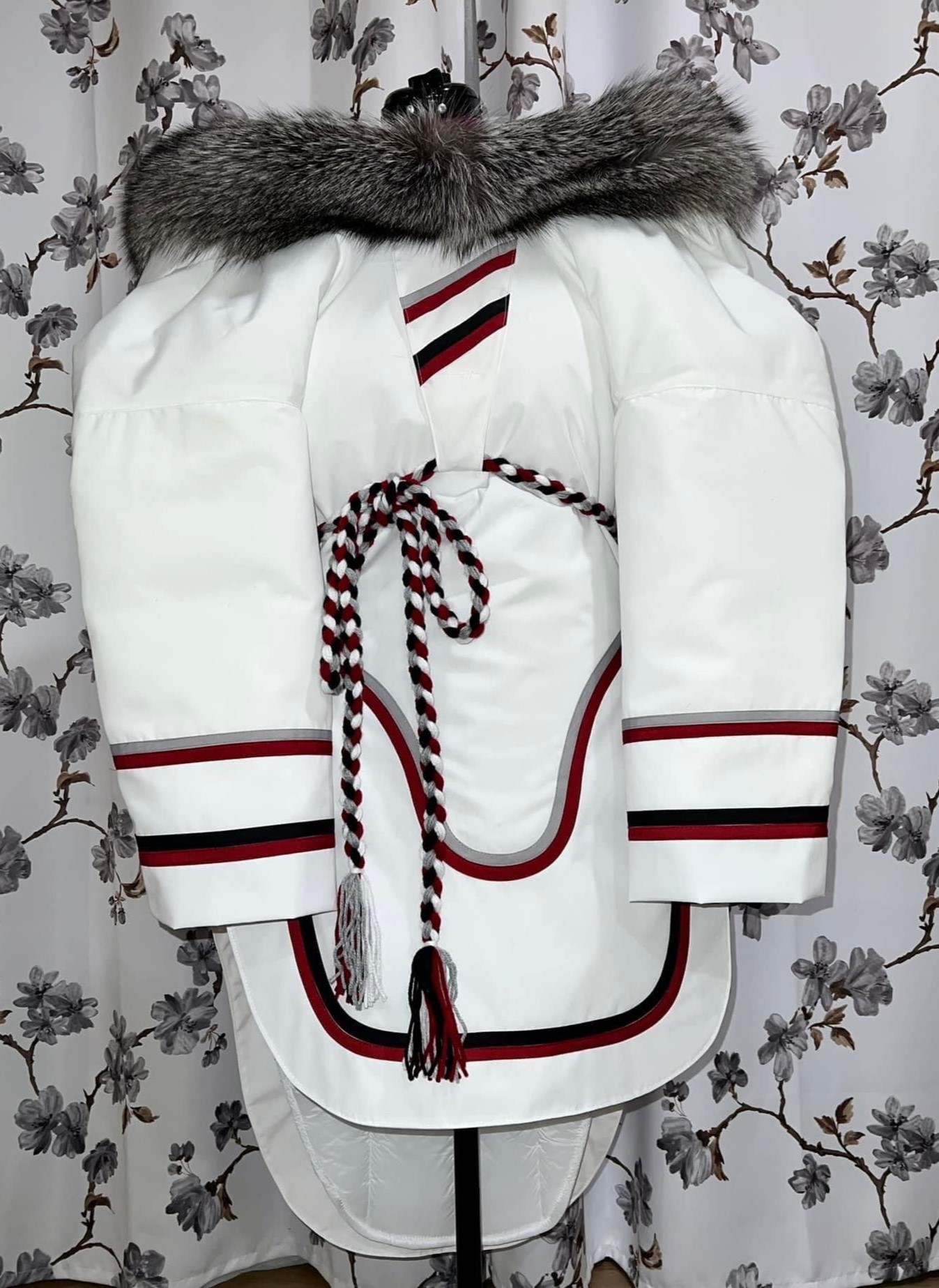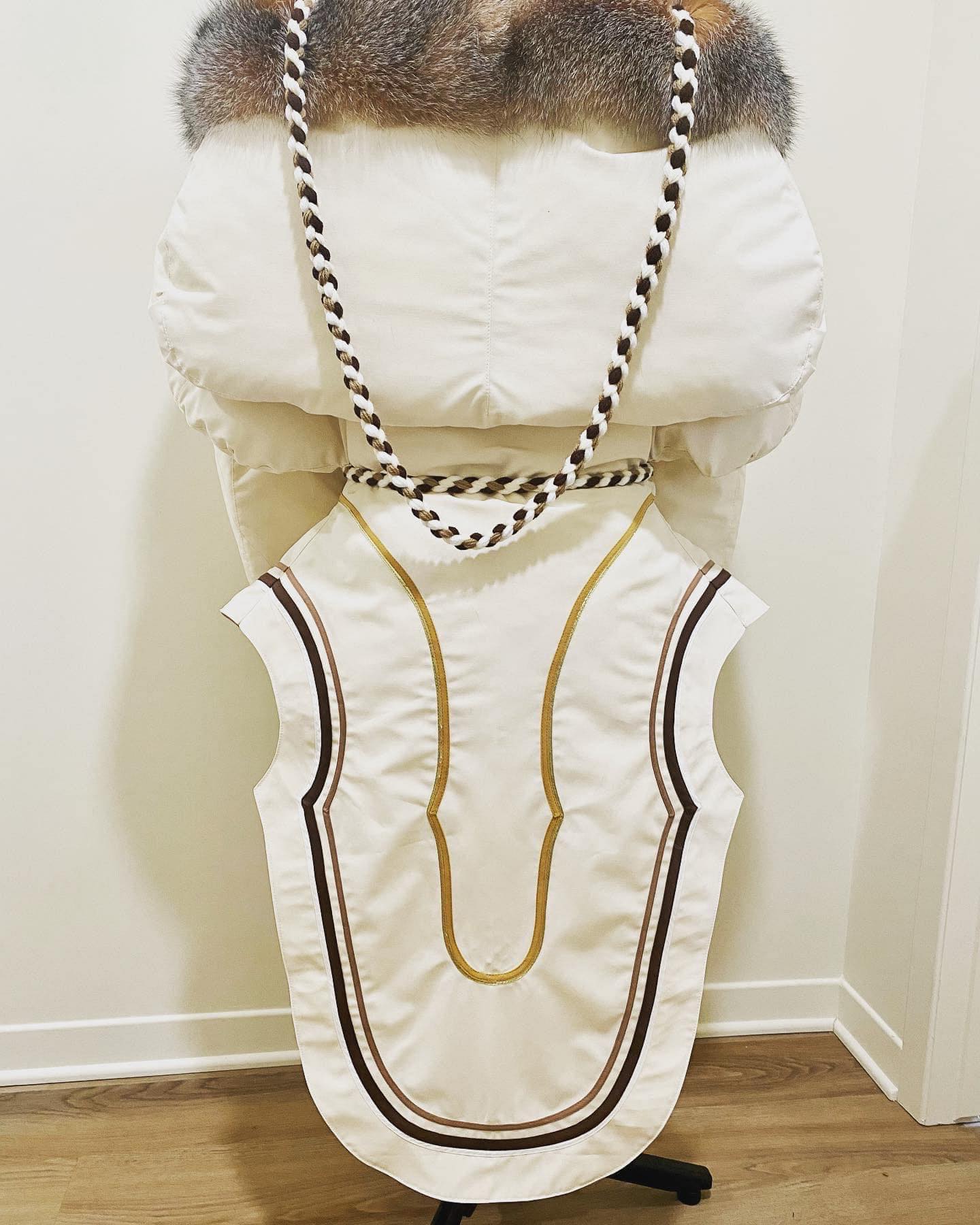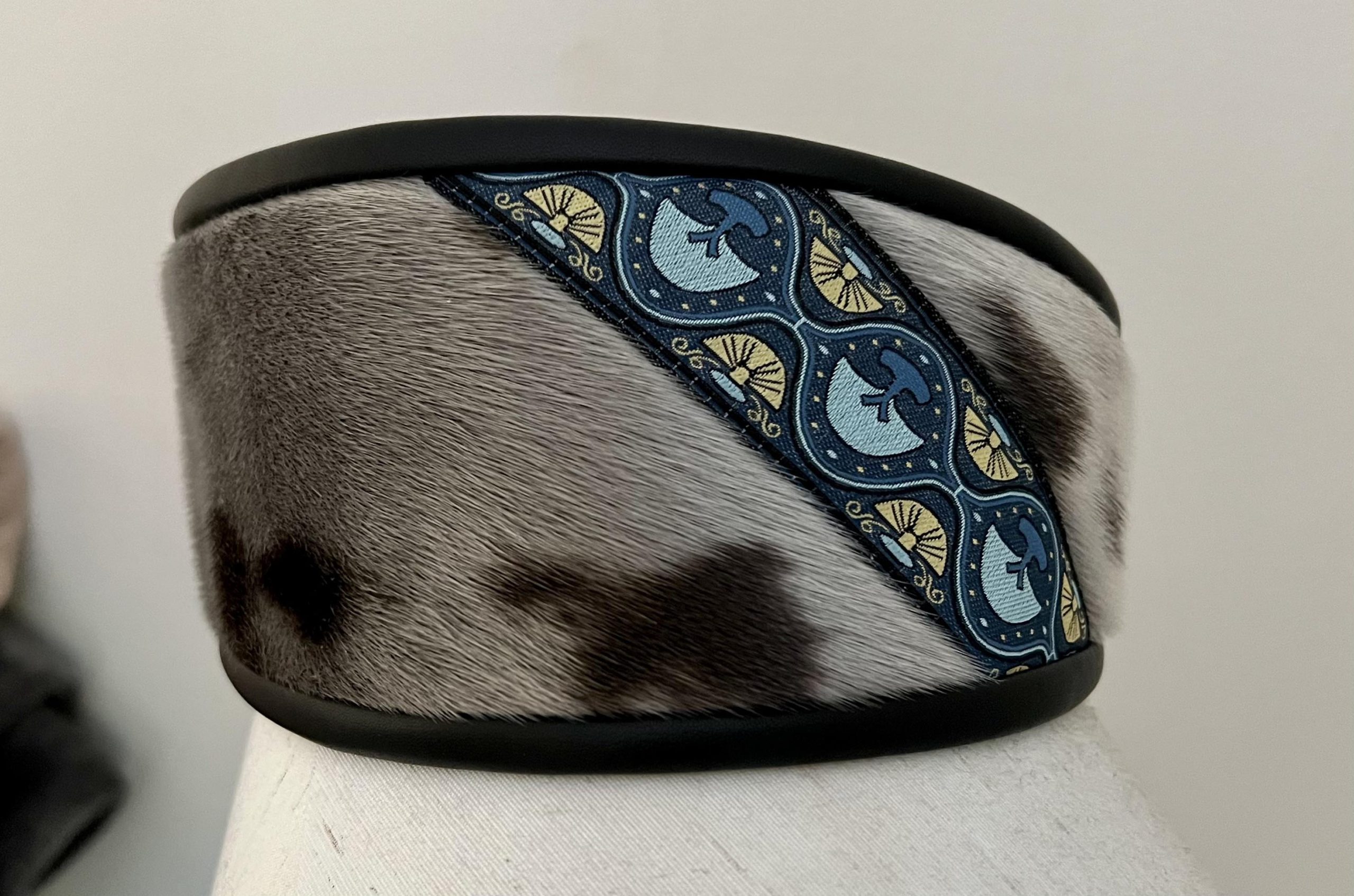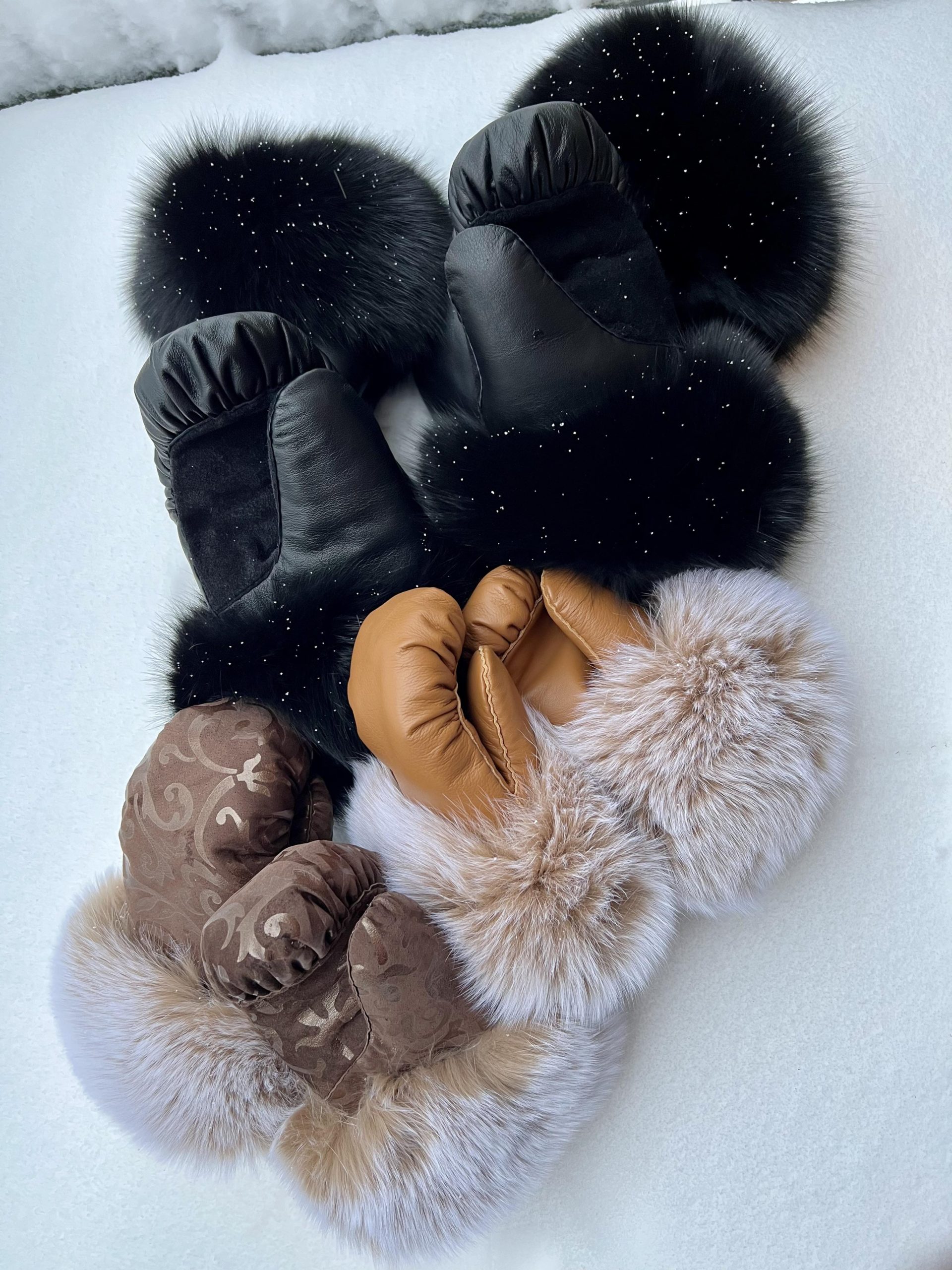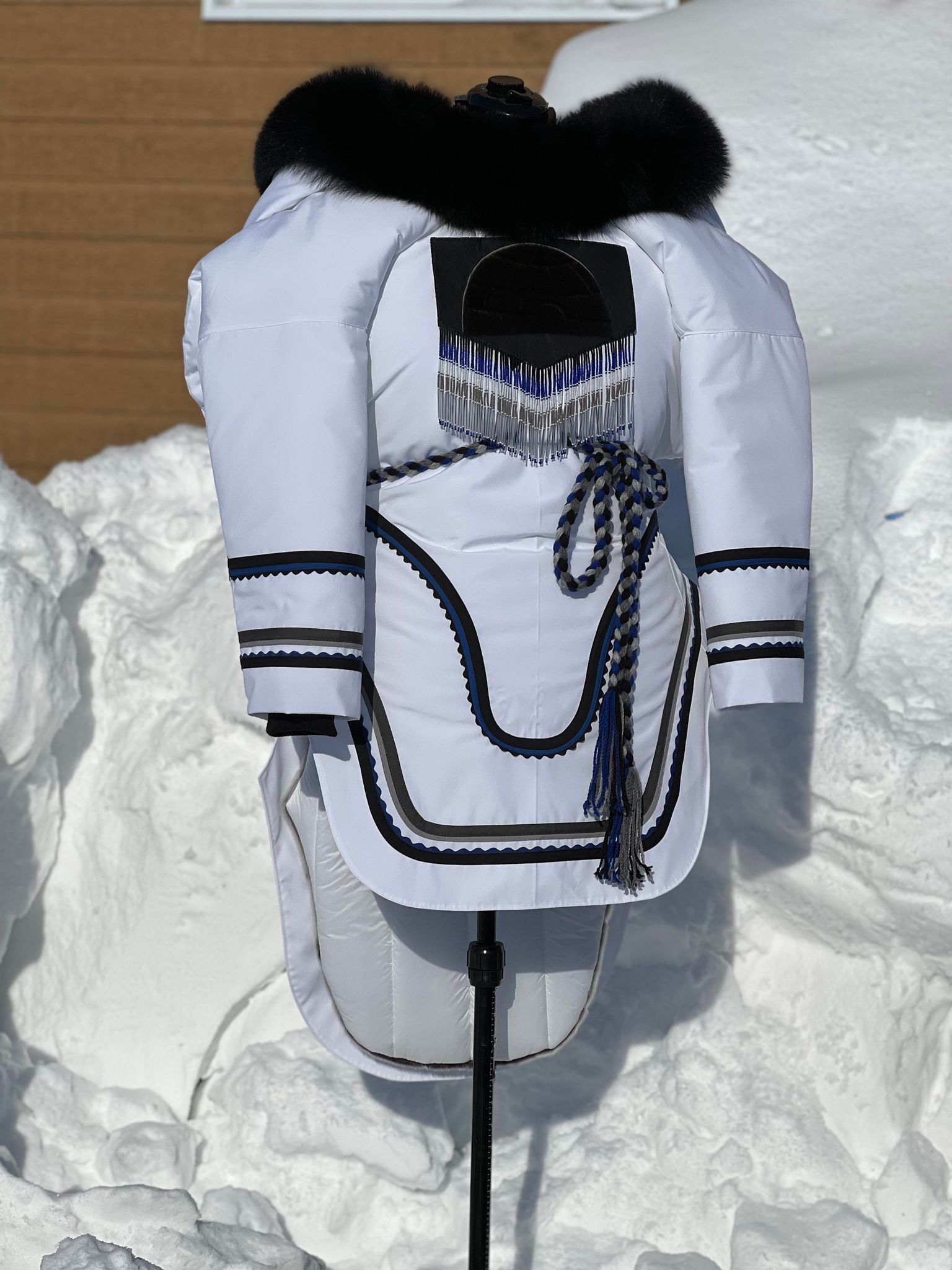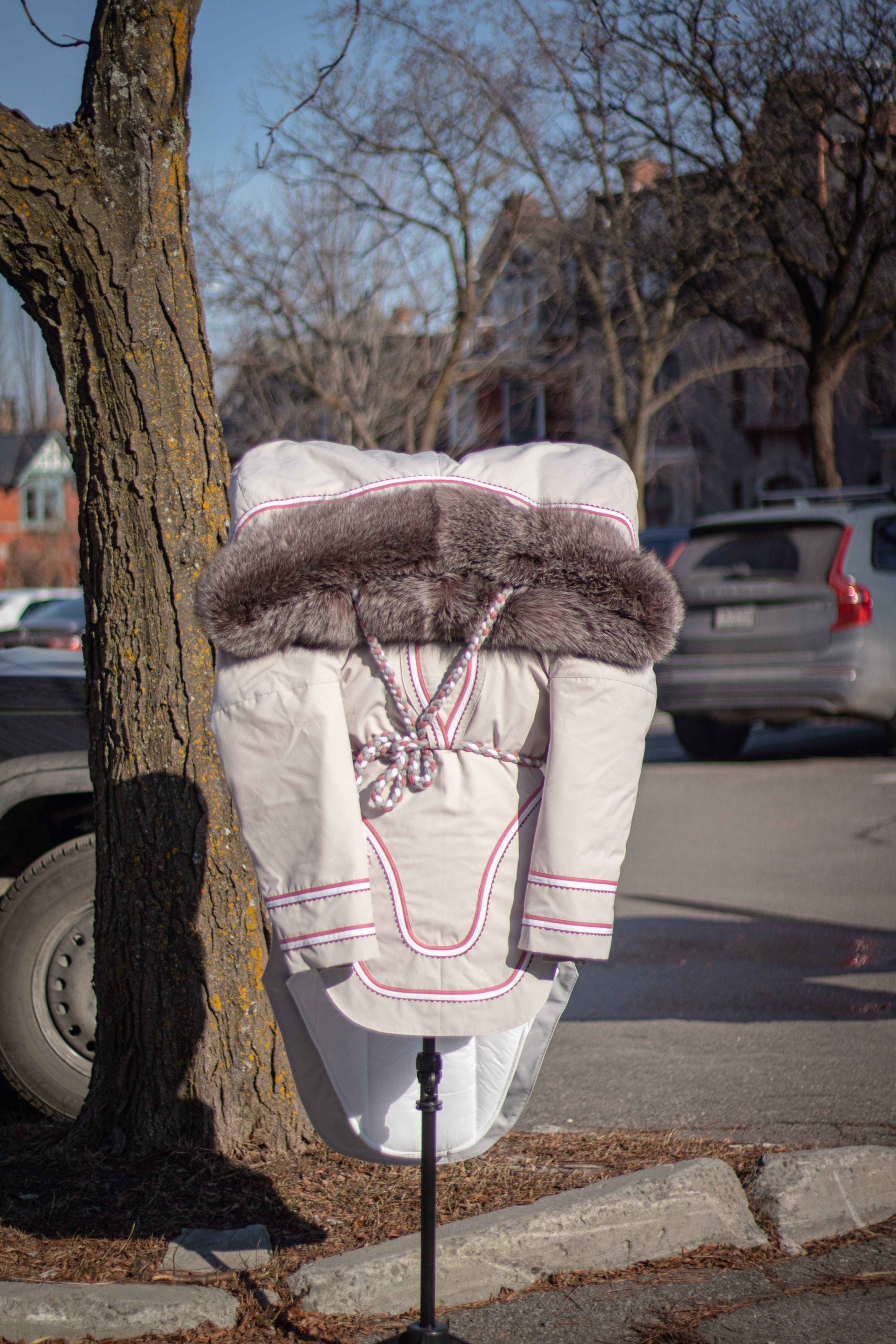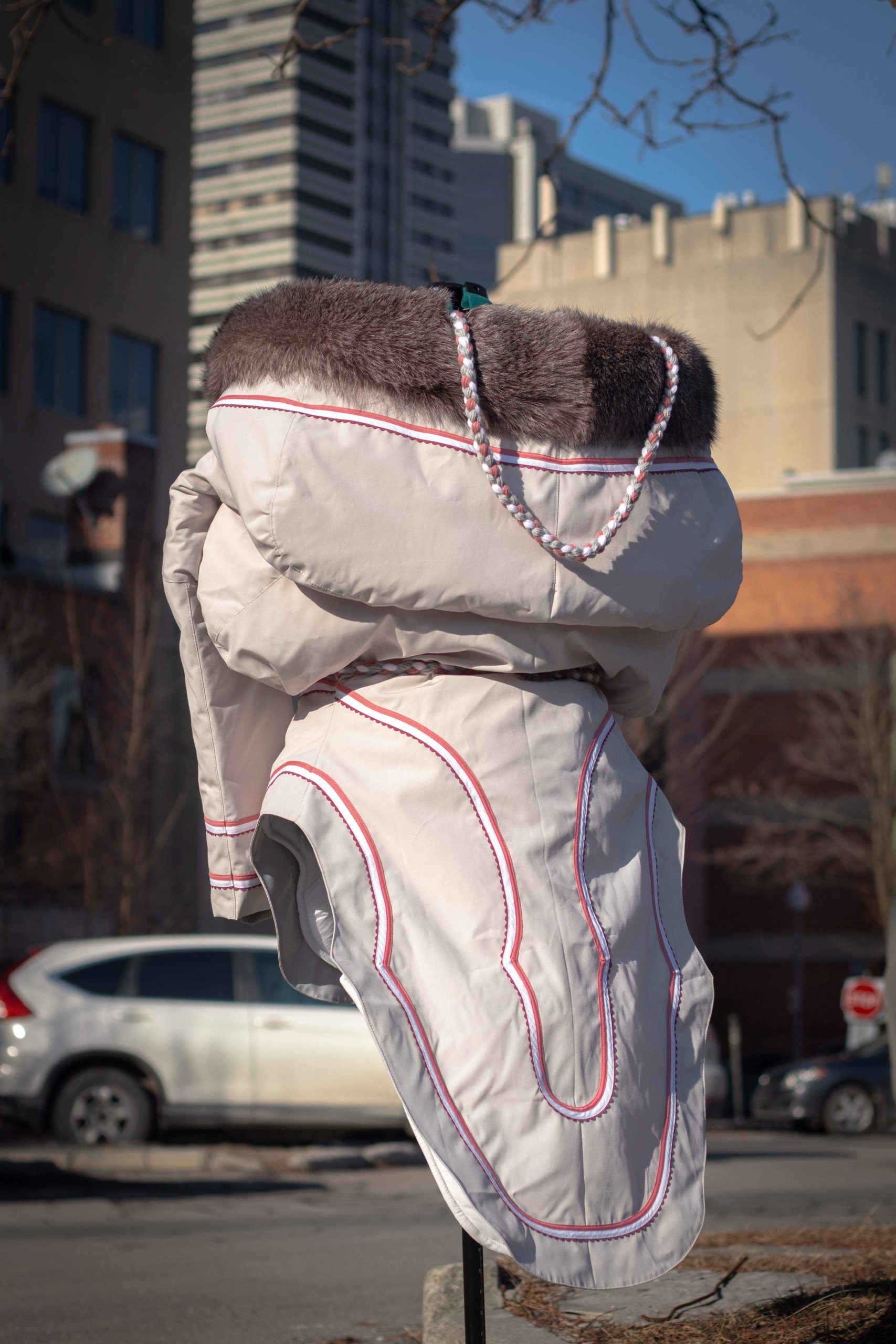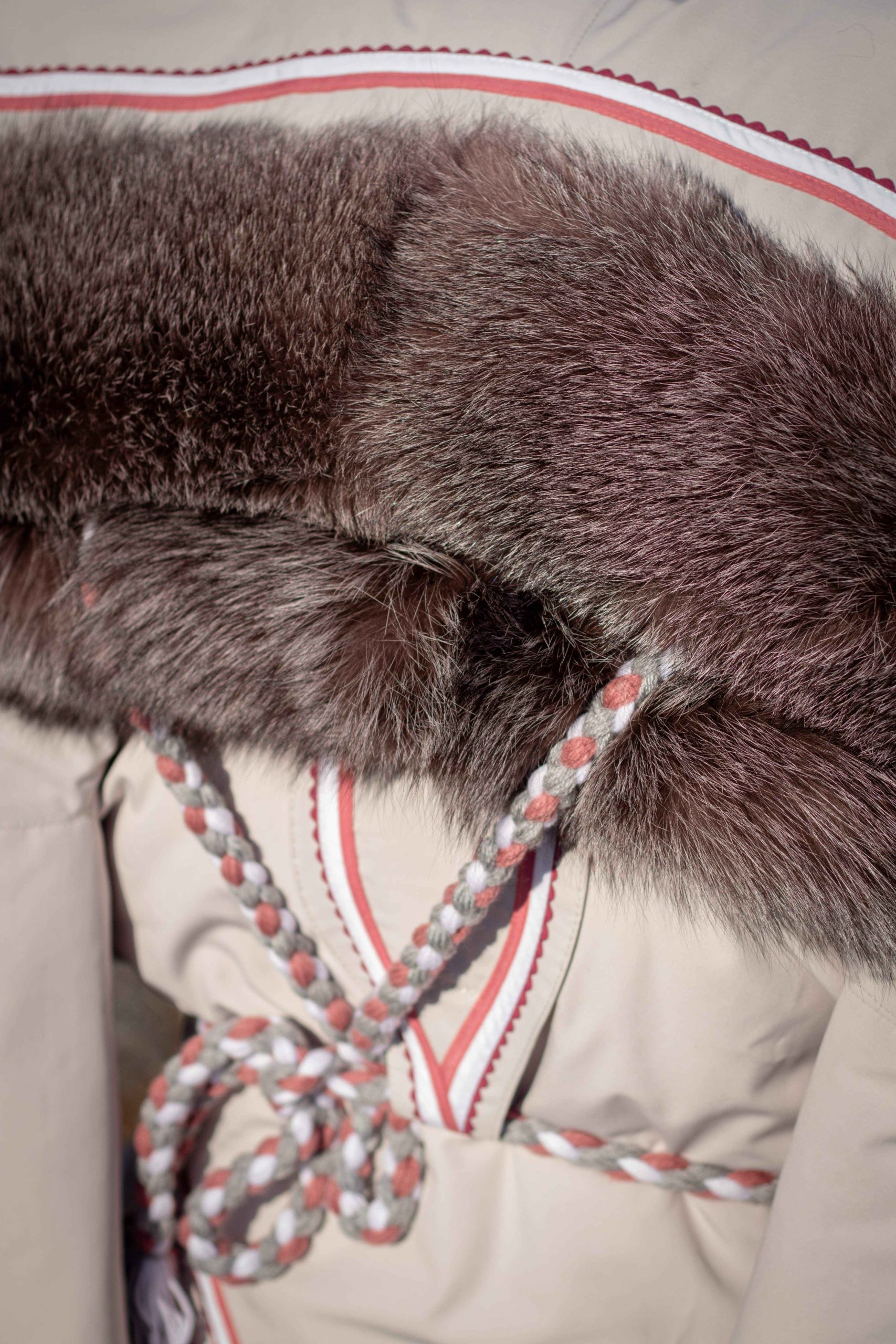ᓯᐊᔭ ᓵᒥᓵᒃ | Sarah Samisack
ᓯᐊᔭ ᓵᒥᓵᒃ ᐱᒋᐅᕐᓴᑎᑦᓯᔨ ᐅᕕᒃᑫᑦ ᑲᑎᒪᔨᖏᓐᓄᑦ ᐃᓚᐅᔪᖅ ᐃᒻᒥᓂᒃ ᑐᓂᓯᒪᑦᓱᓂ ᐊᒻᒪᓗ ᒥᕐᓱᑎᐅᑦᓱᓂ ᓯᐊᔭ ᓵᒥᓵᒃ ᐃᓄᑦᔪᐊᒥ ᐱᕈᕐᓴᑐᕕᓂᖅ. ᑖᕙᓂᒥᐅᒍᐃᓐᓈᑐᖅ, ᑭᓯᐊᓂ ᑕᕝᕙᓂ ᐊᕐᕌᒍᒥ, ᐃᓕᓴᕐᑐᖅ ᓄᓇᕕᒻᒥ ᓯᕗᓂᑦᓴᕗᒻᒥ ᒪᓐᑐᔨᐊᓚᒥ. ᓯᐊᔭ ᒥᕐᓱᓲᒍᓯᔪᕕᓂᖅ ᐊᕐᓈᕉᖏᓐᓈᓱᓂ, ᐊᕐᓀᑦ ᐊᒻᒪᓗ ᐊᖑᑎᑦ ᐊᑎᒋᖏᓐᓂᕙᓪᓗᖅ ᐊᒻᒪᓗ ᐊᒪᐅᑎᓂᕙᓪᓗᖅ. ᐊᓈᓇᒻᒥᓂᑦ ᐃᓕᓐᓂᐊᐸᑦᓱᓂ ᒥᕐᓱᕆᐅᕐᓯᒪᔪᖅ. ᐊᕐᓈᕉᑦᓱᓂ ᒥᕐᓱᕆᐊᒥᒃ ᐊᓕᐊᓲᒍᓯᔪᕕᓂᖅ. ᓯᕗᓪᓕᐹᒥ ᒥᕐᓱᖑᐊᑐᐃᓐᓇᐸᑦᓱᓂ, ᑭᓯᐊᓂ ᓯᕗᓪᓕᐹᒥ ᓄᑕᕋᕐᑖᑲᒥ ᒥᕐᓱᓂᕐᒥᒃ ᐊᓕᐊᒋᔭᖃᓯᕙᓪᓕᐊᓯᒪᔪᖅ. ᕿᑐᕐᖓᖃᓕᕋᒥᑕᒐ ᓯᕗᓪᓕᐹᒥ, ᓯᐊᔭ ᐊᒪᐅᑎᓕᐅᕆᐅᕐᑐᕕᓂᖅ ᐊᒻᒪᓗ ᐸᓂᒻᒥᓂᒃ ᐅᓕᑲᑦᑖᐱᓕᐅᕐᓱᓂ, ᒥᑭᓂᑯᒍᑕᐅᖃᑦᑕᓕᕐᑐᕕᓂᖅ ᓯᕗᓪᓕᐹᑉ ᓄᑲᖏᓐᓄᑦ. ᑕᒐ ᕿᑐᕐᖓᒥᓂᒃ ᐊᓐᓄᕌᓕᐅᕆᐊᖃᖃᑦᑕᓕᕐᓂᕋᒥ ᐱᔪᓐᓇᓯᕙᓪᓕᐊᓯᐊᕐᑐᕕᓂᖅ ᒥᕐᓱᓯᑎᖕᖑᐸᓪᓕᐊᓱᓂ. ᐅᑭᐅᖃᓱᓂ 19-20 ᓴᓂᐊᓂ, ᖃᐅᔨᒪᔮᒥᓄᑦ ᑎᓕᐅᕐᑕᐅᖃᑦᑕᓕᕐᑐᕕᓂᖅ ᒥᕐᓱᕈᑦᔭᐅᒍᒪᔪᓄᑦ, ᑌᒪ ᓄᐃᑦᓯᑐᐃᓐᓇᕋᑕᕐᓱᓂ ᑲᒥᐸᓂᖁᑎᒥᓂᒃ 2019-ᒥ: ᓚᓚᐅᔫᖅ, “ᐅᕙᓐᓄᑦ, ᐊᑦᔨᒌᖕᖏᑐᓂᒃ ᐃᑉᐱᒍᓱᓚᐅᔪᔪᖓ, ᐊᑯᓐᓂᖓᓂ ᐊᕐᓱᕈᓐᓂᐅᑉ ᐊᒻᒪᓗ ᐊᓕᐊᓐᓂᐅᑉ. ᐃᓚᒃᑲ ᐃᑲᔪᕐᓯᓯᒪᑦᓯᐊᓚᐅᔫᑦ ᐊᓈᓇᓐᓄᓗ ᐃᓚᖓᓐᓂ ᐃᑲᔪᕐᓯᔭᐅᒋᐊᕐᑐᓲᒍᐃᓐᓈᓱᖓ.” ᑕᒐ ᐱᔭᕇᕈᓐᓇᓕᕐᑐᖅ ᐊᑎᒋᒥᒃ ᐅᓪᓗᐃᓇᖅ, ᑭᓯᐊᓂ ᐅᐃᒪᒍᓐᓀᓗᓂ ᒥᕐᓱᕆᐊᒥᒃ ᐊᓕᐊᓐᓂᓴᖅ. ᓱᖏᐅᓐᓂᕆᓕᕈᕕᐅᒃ ᓇᓗᓇᖕᖏᓕᕐᐸᓕᐊᒍᓐᓇᑐᖅ” ᓚᒋᐊᓪᓚᓚᐅᕐᑐᖅ. ᐊᓕᐊᒋᔭᖃᕐᓂᐹᖅ ᐃᓕᑦᑎᕆᐊᒥᒃ ᐊᑎᒋᓕᐅᓚᖓᑦᓱᓂ ᐊᒻᒪᓗ ᐊᑯᓕᓐᓂᒃ, ᐃᓄᐃᑦ ᐊᒪᐅᑎᖏᓐᓂᒃ ᐊᒻᒪᓗ ᒪᙯᓯᐅᑎᓂᒃ. ᓯᐊᔭ ᓯᕗᓪᓕᐹᓴᔭᓃᑦᑐᓂ ᐃᓕᓭᔨ ᐃᓄᑦᔪᐊᒥ. ᐃᓱᒫᓗᒍᑎᖃᓚᑳᑦᑐᖅ ᖃᑭᒋᐊᕐᕕᖁᑎᒥᓂᒃ ᐊᖏᓕᕙᓪᓕᐊᔨᐊᖃᓗᐊᓕᕆᐊᖅ, ᐃᒻᒥᓂᕿᓗᓂ ᐱᔭᑦᓴᖃᓗᐊᕐᓂᐅᔭᕐᐸᓕᕋᒥ, ᐊᒻᒪᓗ ᐅᓪᓗᑕᒫᑦ ᒥᕐᓱᕆᐊᒥᒃ ᑕᖃᓐᓇᐸᑦᓱᓂ. ᑕᒐᑕᒐᐅᓂᖓᓂ, ᓇᒻᒥᓂᑦᓴᒥᓂᒃ ᐊᓐᓄᕌᓕᐅᖃᑦᑕᑐᖅ, ᑭᓯᐊᓂ ᐃᓕᓴᕐᓂᒥᓂᒃ ᓄᓇᕕᒻᒥ ᓯᕗᓂᑦᓴᕘᒥ ᐃᓕᓴᕐᓂᒥᓂᒃ ᐃᑉᐱᒍᓱᓐᓂᓴᐅᖃᑦᑕᑐᖅ, ᐊᑐᕈᓐᓇᓯᑦᓯᐊᓂᐊᕐᑕᒥᓂᒃ ᐱᒋᐅᕈᑎᖃᓚᖓᒍᒪᒧᑦ. ᑖᒃᑯᑐᐊᒍᖕᖏᑐᓂᓗ ᐱᒐᑦᓴᖃᓚᖓᑦᓱᓂ ᐃᓕᓴᕈᒪᓛᕐᒥᒐᒥ ᐊᓐᓄᕌᓕᐅᕐᓂᒥᒃ ᐆᑦᑑᑎᓕᐅᕐᓂᓂᒃ ᐊᕐᕌᒍᓂ 5-ᓂ. ᐊᓈᓇᐅᓂᕐᒥᓄᑦ, ᓯᐊᔭ ᕿᑐᕐᖓᒥᓂᒃ ᐱᒍᓐᓇᑕᒥᓂᒃ ᐃᓕᓐᓂᐊᑎᑦᓯᒍᒪᔪᖅ. ᐱᖓᔪᐊᓂᒃ ᕿᑐᕐᖓᑖᕐᓱᓂ, ᐊᖓᔪᖓᓄᑦ ᑕᑯᓐᓇᑕᐅᖃᑦᑕᓚᐅᔫᖅ ᑲᒻᒥᐅᑎᓗᒍ ᐊᒫᒪᑦᑎᓯᑦᓱᓂᓗ, ᐸᓂᒻᒥᓄᑦ ᐊᖓᔪᑦᓯᒧᑦ ᓚᔭᐅᔪᕕᓂᖅ: “ᐊᓈᓈᒃ, ᒥᕐᓱᑎᐅᒍᒪᕗᖓ ᐊᓈᓇᐅᓗᖓᓗ ᐊᖏᓕᒍᒪ, ᐃᕝᕕᑎᑐᑦ”. ᕿᑐᕐᖓᒥᓄᑦ ᐱᔪᑦᓴᐅᔮᓚᕿᑎᑕᐅᓲᖅ, ᐊᒻᒪᓗ ᐃᓕᓐᓂᐊᑎᖃᑦᑕᓛᕐᓱᒋᑦ ᐃᑲᔪᕐᓗᒋᓗ, ᐃᓕᓴᕐᓗᒋᑦ ᐱᒋᐊᕐᑎᓯᒍᓐᓇᓯᑎᒋᐊᕐᓗᒋᑦ ᓇᒻᒥᓂᑦᓴᒥᓂᒃ.
Éducatrice, bénévole dans le Youth Commity et couturière, Sarah Samisack a grandi à Inukjuak. Elle y habite toujours, mais pour l’année en cours, elle fait ses études dans le programme Nunavik Sivunitsavut (NS) à Montréal. Sarah fait de la couture depuis l’adolescence, surtout des parkas pour femme et homme ainsi que des amautiit (manteaux traditionnels pour les mères).
Elle a appris à coudre de sa mère. C’est durant son adolescence qu’elle s’est intéressée à la couture. Rien de très sérieux au départ, mais son intérêt s’est accrue lorsqu’elle a eu son premier enfant. Étant nouvellement mère, Sarah a fait son premier amautik et un petit manteau pour sa fille, qui servira à ses deux autres enfants. C’est donc l’envie de créer pour ses enfants qui est à l’origine de ses premiers pas comme couturière qualifié.
Autour de 19-20 ans, les gens autour d’elle lui faisait des commandes, ce qui l’a amené à la création de son entreprise en 2019. Elle raconte: « Ce moment était pour moi un mélange d’émotions, entre stress et excitation. Ma famille m’a beaucoup supporté et je retourne encore voir ma mère pour du soutien et son avis. » Maintenant, elle peut finir tout un parka en un jour, mais elle préfère prendre son temps, travailler sans se presser. Elle ajoute : « plus tu en fais, plus c’est naturel et facile ». Ce qu’elle préfère c’est ajouter les motifs sur les parkas et faire des akuliit, des amautiit traditionnels et des manteaux pour la chasse.
Sarah est aussi éducatrice au primaire à Inukjuak,. Elle avoue avoir un peu peur que son entreprise devienne trop grosse, parce que toute seule c’est une grande responsabilité et coudre tous les jours est fatiguant. Pour l’instant, elle crée quelques projets personnels mais elle se consacre surtout à son éducation avec le programme de NS afin d’acquérir des compétences qui lui seront utiles. Non seulement cela, mais Sarah voudrait aller en étude de mode dans les prochains 5 ans.
Étant mère, Sarah aimerait transmettre ses connaissances à ses enfants. Quand son troisième est né, sa petite deuxième la regardait faire des kamiit tout en allaitant, sa fille lui a dit : « Maman, j’aimerais être une couturière et une mère plus tard ». Ses enfants l’inspirent, elle va leur montrer comment faire et les aider, leur apprendre le côté entrepreneurial.
Educator, Youth Commity volunteer and seamstress Sarah Samisack grew up in Inukjuak. She still lives there, but for the current year, she’s studying in the Nunavik Sivunitsavut (NS) program in Montreal. Sarah has been sewing since she was a teenager, mainly women’s and men’s parkas and amautiit (traditional mothers’ coats).
She learned to sew from her mother. It was during her teenage years that she became interested in sewing. Nothing serious at first, but her interest grew when she had her first child. As a new mother, Sarah made her first amautik and a little coat for her daughter, which would be used for her other two children. So it was the desire to create for her children that prompted her first steps as a qualified seamstress.
Around the age of 19-20, the people around her were placing orders for her, which led to the creation of her company in 2019. She says: “For me, that moment was a mixture of emotions, between stress and excitement. My family was very supportive and I still go back to my mother for support and advice.” Now, she can finish an entire parka in a day, but she prefers to take her time, working without rushing. The more you do, the more natural and easy it is,” she adds. Her favorite is adding patterns to parkas and making akuliit, traditional amautiit and hunting coats.
Sarah is also an elementary school teacher in Inukjuak. She admits she’s a little worried about her business getting too big, because it’s a big responsibility all on her own, and sewing every day is tiring. For the time being, she’s creating a few personal projects, but she’s mainly focusing on her education with the NS program, to learn skills that will be useful to her. Not only that, but Sarah would like to study fashion in the next 5 years.
As a mother, Sarah would like to pass on her knowledge to her children. When her third was born, her second was watching her make kamiit while breastfeeding, and her daughter said to her: “Mum, I’d like to be a seamstress and a mother when I grow up”. Her children inspire her, and she will show them how to do things and help them, teaching them the entrepreneurial side of things.
ᖃᐅᔨᒋᐊᑦᓯᐊᕈᒪᒍᕕᑦ ᓴᓇᖕᖑᐊᑎᐅᑉ ᒥᑦᓵᓄᑦ / Découvrir plus sur l’artiste / Know more about the artist:
Facebook Page
ᐊᓪᓚᑐᖅ | Texte de | Text by: Jessie Fortier Ningiuruvik
ᐱᔭᑦᓴᓯᐊᖁᑎᖓ / Projet spécial / Special Project-Amautik, 2024
ᐊᑦᔨᓕᐊᕕᓂᕐᒥᓂᒃ ᐊᑐᕐᑕᐅᑎᑦᓯᓯᒪᔪᑦ / Crédit photos / Photo Credit: Tukai Augiak
